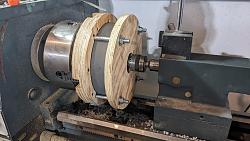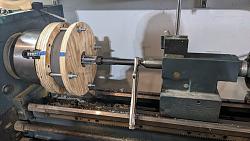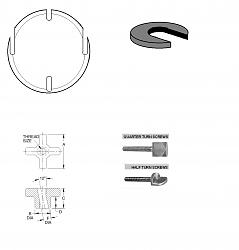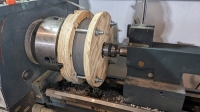I'd pursue softjaw suggestions, in a 3 jaw, sized for nearly full 360° grip. MDF - HDF will work in lieu of 11 layer plywood, all before advancing to aluminum.
To bore, I'd run a small flycutter-like setup with 2 bits; 1 roughing, other larger but undersized for reamer.
With a large enough vise my attempts would use same tooling but in a mill. With a table stop repeating should be correct.


 LinkBack URL
LinkBack URL About LinkBacks
About LinkBacks


 Reply With Quote
Reply With Quote








Bookmarks